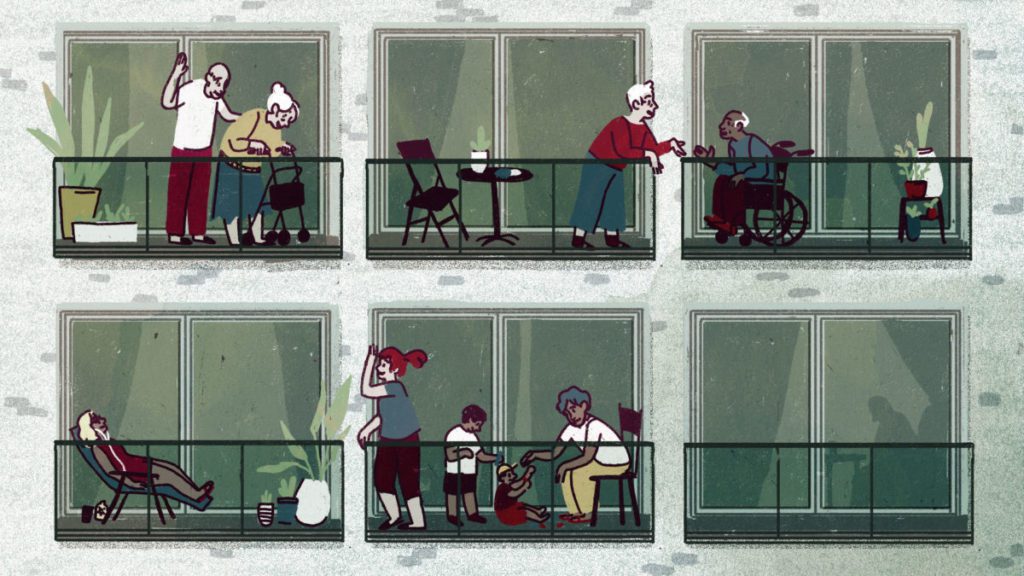In his commencement address at Stanford University, the late Steve Jobs credited an esoteric calligraphy class in college as his inspiration for Apple’s revolutionary typography. His anecdote illustrates the theory, posited in the bestseller The Medici Effect the year before Jobs’ address, that innovation is driven by the intersection of diverse industries, cultures and ideas. Cross-disciplinary innovation, touted as a critical aspect of Apple’s success, is gaining traction in healthcare as well.
Recognizing the value of leveraging ideas from different fields, Howard Abrams has dedicated the past 20 years to creating an organization, OpenLab, that embodies what it calls “trans-disciplinary” innovation. During his time as division head of General Internal Medicine at University Health Network and Mount Sinai Hospital (UHN/MSH), he recruited a founding team for that organization’s precursor, the Centre for Innovation in Complex Care (CICC). In addition to Abrams, founding members Dante Morra, Peter Rossos and Sherman Quan brought a variety of perspectives from medicine, business, engineering and informatics to the nascent organization. As the CICC evolved and its vision became more expansive, it was re-imagined to become OpenLab, for which Abrams is the current director and Tai Huyhn is the creative director. OpenLab describes itself as a “design and innovation shop dedicated to finding creative solutions that transform the way healthcare is delivered and experienced.”
Abrams says building an organizational identity of trans-disciplinary innovation needs several enablers.
The first is diversity of training and background. OpenLab recruits from a variety of disciplines including “medicine, pharmacy, nursing, acting, film, engineering, business and patients – a very broad range of people.” In turn, Abrams appreciates how this diversity encourages divergent thinking. “They all saw healthcare from a very different perspective … It really opened my eyes to different ways of seeing things.”
A second is encouraging team members to engage in work beyond their traditional backgrounds. “People bring specific titles and skill sets but we don’t limit them to the letters after their name … We have engineers who are amazing social scientists … We have filmmakers who are doing great system redesign. We call this trans-disciplinary work.”
These factors are on display in the Vertical Aging project, in which OpenLab aims to support naturally occurring communities of seniors living in Toronto’s downtown core. Numerous interdisciplinary tools have contributed to the success of this project, including design thinking to understand the experiences and needs of these communities, virtual technology to enhance remote care for mobility-limited seniors and architectural design to consider how the buildings themselves can be retrofitted to optimize living conditions.

OpenLab illustration of Vertical Aging project.
Drawing from diverse disciplines can produce “eureka” moments that advance once unsolvable problems. A prime example is Christopher Charles’ Lucky Iron Fish project that “revolutionized the treatment of iron deficiency in Cambodia” and earned him the prestigious Canadian Medical Association Award for Young Leaders in 2018. Charles emphasized the convergence of numerous disciplines in his work, including nutrition, marketing, communications, education and public health, noting that their “intersection … was the most important thing to the success of the project.”
Charles, a resident physician in anesthesiology at the University of Toronto, lived in a rural Cambodian village for three years while conducting research on how widespread iron deficiency could be addressed by adding iron into the cooking vessel to increase the food’s iron content. However, after several unsuccessful trials with “lump”-shaped pieces of iron, Charles credits his eventual success to two key approaches. “One (was) to ensure that education (was) a key component of the project. To really help people understand what anemia is and how it can affect you, how it can affect your kids, how it can … be a disease that’s passed … intergenerationally.
“The second was to improve the appearance of the tool to make it culturally relevant so it would resonate with individuals and communities to improve acceptability.” He described the evolution of the tool from an iron bar to a circle and even a lotus flower, none of which “resonated with the community.” However, the idea for the iron fish was sparked when he saw a “market vendor who was whittling wood into fish shapes.” The fish is a symbol of luck in Cambodia and incorporating this cultural symbol increased adherence from 30 per cent to more than 90 per cent.

Christopher Charles’ Lucky Iron Fish, winner of a prestigious CMA award.
As the pace and scope of cross-disciplinary innovation in healthcare increase, Kaveh Shojania, a general internist at Sunnybrook Health Sciences Centre and vice chair of quality and innovation of the University of Toronto, emphasizes the importance of investing resources in the highest yield areas.
His research focuses on identifying and implementing evidence-based patient safety interventions. He cautioned that novel healthcare interventions have varying levels of impact, citing the example of electronic medical record (EMR) systems that are often portrayed as the “magic bullets” of improving patient care. However, a Cochrane review he conducted in 2009 demonstrated that computerized reminders, typically delivered through EMR systems, only demonstrated a modest benefit (approximately 5 per cent) in provider adherence to key process outcomes such as medication or test ordering, especially relative to the costs of novel information technology systems. A recently updated version of this review included more than three times the number of trials but obtained the same result – computerized reminders and more complex decision supports typically produce only a 5 per cent increase in the proportion of patients receiving recommended care.
Accordingly, Shojania says “we have to be a bit more strategic and thoughtful about what type of innovation (we fund) in Canada, (what) we think is particularly valuable.” He stressed that “there is no overarching group that has been thinking about this … the whole system has evolved from multiple streams of control and incentives” while suggesting the need for “longer-term thinking by a central coordinating agency.” For instance, he notes that “we’re going to have to look at more complex interventions that cross domains … (into) the social determinants of health” that address the root causes of health problems.
In addition to the profound social costs, homelessness has been estimated to cost the Canadian economy upward of $7 billion per year. Anita Palepu aspires to address the root causes of homelessness, given that “the pipeline and the vulnerabilities and the reasons why people become homeless have not been addressed.” Palepu, a general internist and head of the Department of Medicine at the University of British Columbia, has conducted research for the past 20 years on vulnerable populations, such as patients who are homeless or use drugs.
Palepu says her partnership with a national consortium of Canadian researchers is critical to her success. Similar to Abrams, she emphasizes that “you need diversity in your teams, you need people who are from different disciplines who think differently … That diversity in perspective and discipline and thinking is really powerful.”
In a recent study, Palepu and other researchers at the University of British Columbia partnered with a Vancouver-based charity and interdisciplinary team to conduct a randomized trial in which 50 homeless individuals received a one-time cash transfer of $7,500. Over the following year, their data demonstrated that these individuals moved into stable housing faster, achieved higher food security and had decreased reliance on the shelter system of care, resulting in an overall cost savings to society (calculated at $600 per person after accounting for the initial cash transfer). Their research demonstrates the enormous impact of health interventions that address the social determinants of health in an interdisciplinary manner.
As the global burden of disease shifts from acute to chronic illness in parallel with an aging population, the need to redesign healthcare from a reactive, acute care paradigm to a preventive one is critical. Palepu says she believes that “embracing the social determinants of health will be essential” to achieving this goal and the specific problems we are wrestling with are both complex and wide-ranging. But how can we move the nexus of care out of brick-and-mortar hospitals and into the home? How can we address issues in the social and physical environments where people live?
“It will take a high-performing interdisciplinary team to do it,” says Palepu. Cross-disciplinary innovation will require drawing upon the right ideas, creating a culture that supports innovation and strategic thinking on the highest yield areas for investment. Healthcare is an issue that affects all of us but that also means that we can all be part of the solution, regardless of our background or the letters after our name.


The comments section is closed.